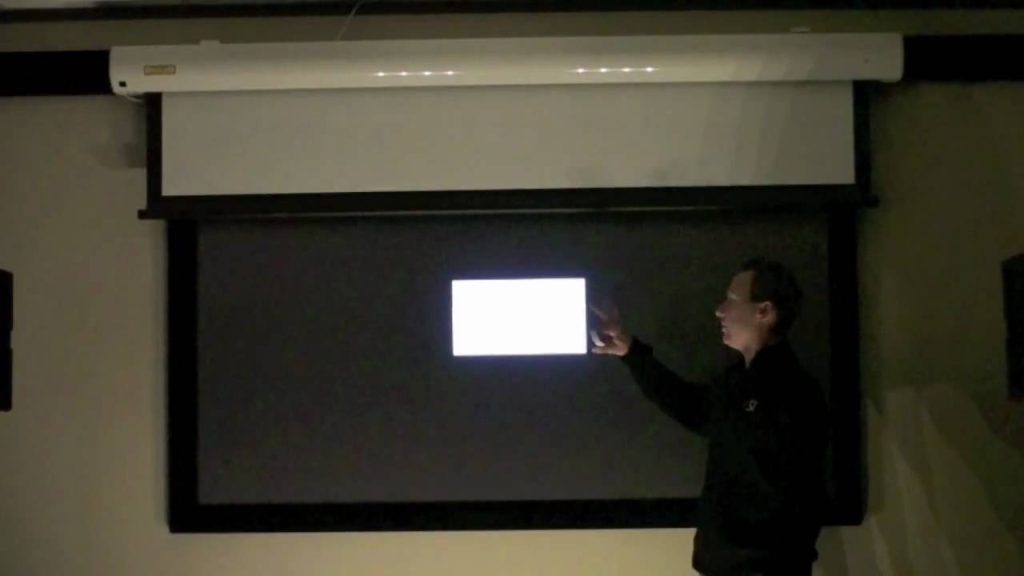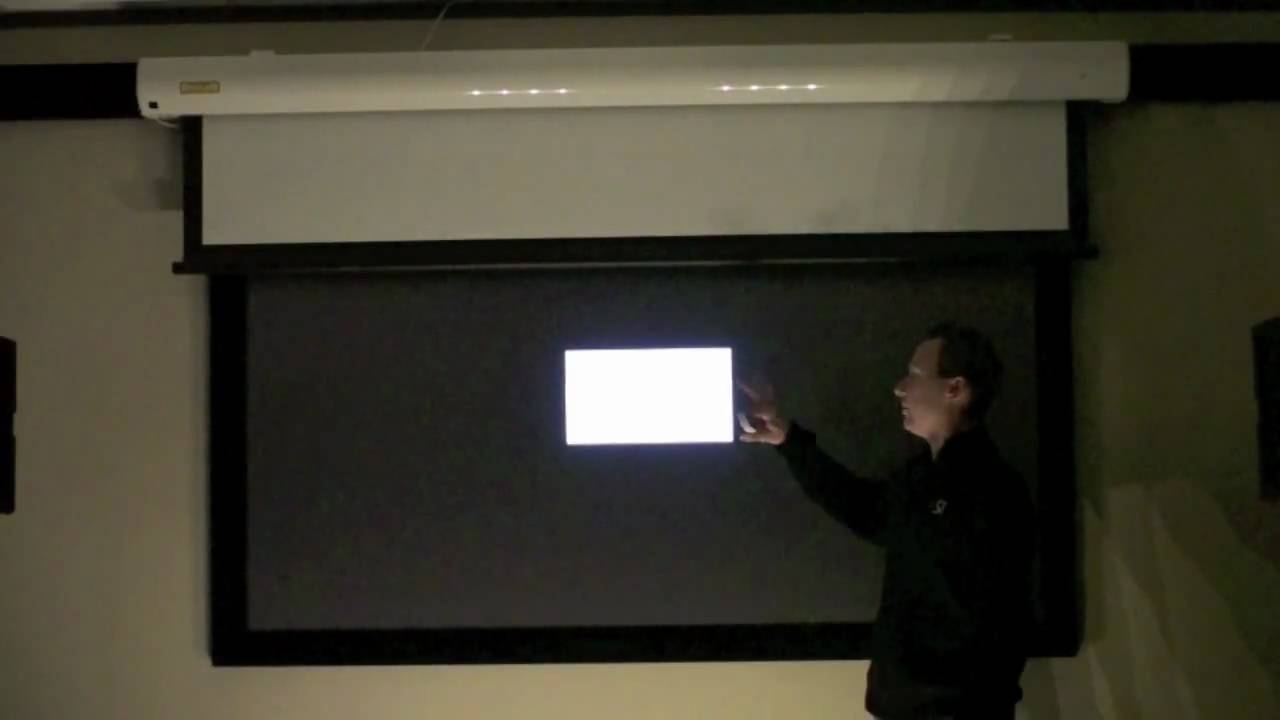When it comes to projector screens, people usually consider three colors. These are white, grey and black. Each color comes with its advantage and disadvantage. Depending on the situation or environment of your viewing room or space, one color will work superior to the other. Given that, you may ask if you can use a black sheet as a projector screen.
Can I Use Black Sheet as Projector Screen?. Yes, black sheets are excellent for projector screens. In fact, they will provide you with a superior viewing experience compared with other colored sheets. They will provide you with better color contrast and quality image. Generally, they are good for home theatres due to a lot of light interference.
Regardless of the many advantages black sheets will offer you, they have many drawbacks. This is even obvious because most people still use white sheets. Keep reading to know more about using black sheets as a projector screen.

Should I Use Black Sheet As Projector Screen?
Sometimes you utilize a black sheet even though white is the color most frequently used for a projector screen. Clearer pictures are produced on a black sheet. This is because, in contrast to the white sheet, it provides a greater view of the dark area of a picture. This is the best choice when the ambient light in the room is too strong.
Black projector screens are less prevalent than those in white. When projecting, very few individuals utilize a black screen, and the reason for this is not implausible. For a very long time, white screens have been the most popular projector screens. On the other hand, the popularity of black displays has just recently started to grow.
Clear pictures may be projected quite effectively on black sheets. They do, however, have significant drawbacks, some of which are:
- Bright pictures frequently have a rainbow or shimmering look.
- A portion of the projected image on a black sheet could appear brighter than the other.
- It needs a projector with a lot of lumens of brightness.
Black screens are often expensive. If you’re not utilizing a black sheet or piece of cloth, this added expense could be too much.
The projector screen’s traditional hue has always been white. But because dark displays offer distinct advantages, more and more people are veering toward them. In other words, a black or grey screen offers far greater contrast and is the best choice for viewing at night when there is minimal outside light.
Projector displays are more than colored surfaces. Additionally, important factors include the material, surface roughness, and ways in which they absorb and reflect light.
Similar Read:
Can I Use a Sheet as a Projector Screen?
Best Fabric To Use For Projector
There isn’t a “best” projection screen material or cloth. However, textile materials, ideally with blackout capabilities, are the ones that best meet the needs of the majority of individuals. A blackout fabric with a white front should be ideal in most situations if I had to choose only one. It features broad viewing angles and is non-reflective.
The white front can accommodate a variety of projection needs and settings. Although the white surface may not offer the highest contrast, it guarantees color accuracy, upholding the images’ purity. Additionally, the cloth is often elastic, making it simple to remove creases or folds with the right tension.
Difference Between Black And White Projector Screens
Color
Any of these displays will provide the finest color quality. They will provide the most accurate colors for you. However, dark screens are the solution if you want the best. This is because completely black screens will have significantly stronger contrast. When you utilize a dark screen, your projection’s colors will stand out more.
This contrasts with a white screen where many lighter colors might be obscured. The whites and brightness of your photograph will lose detail. Additionally, your image’s blacks will likewise seem faded.
However, dark sheets are not without flaws. There will frequently be some regions that are brighter than others. When you choose black, you can see shimmering effects on the screen. Additionally, a black screen might make the dark regions of your image less detailed. Not as awful as having low contrast, though. However, it demonstrates that black is not always preferable to white.
Variety
Black screens perform better than white screens in various instances. However, why are white screens considered to be the norm? It’s because there are so many choices available.
There aren’t many black projector screens around. Although their market share is growing, they still don’t have as many possibilities as white screens. For the time being, most people only use white displays because of this.
You may choose any size for a white screen when purchasing one. Additionally, screens might have unique qualities, like allowing sound to travel through them. You may mount your speakers behind the screen and still get the sound.
Cost is also another aspect to think about. White screen alternatives come in a wide variety of prices due to their abundance, from extremely low to extremely high. All-black displays, however, are now rather pricey.
Reflective Property
The reflecting qualities of white and black projector screens are another significant distinction. As you may already know, white reflects light, whereas black absorbs it. For this reason, we dress in black on chilly days and white on hot days. Similarly, white screens reflect most of the light that strikes them.
It’s advantageous since it lets you view the screen’s content from any direction. You will see a crisp image whether you are at the front or on the side of the screen. Even those who are far off to the side may see what is going on, thanks to the reflected light.
This reflectiveness has the drawback of making the entire space brighter. You need a dark environment if you want to create a home theatre.
However, this won’t be feasible if the screen is white. Additionally, a great deal of the contrast in your image will be lost due to light reflection. Because of this, it may be challenging to see what is on the screen in a bright setting. On the other hand, light is absorbed when you have a dark screen. This has a very different result.
You can only appreciate dark displays, for example, if you are in the center. People on the side won’t be able to see anything on the screen since the light doesn’t reflect.
To fully appreciate your presentation or movie, maintain an angle. Aside from that, black screens have excellent absorbing properties. You won’t need to be concerned about lighting your home theatre with it. Additionally, you may enjoy projections while the sun is shining through your windows.
Final Thoughts
Generally, black-colored screens are considered the best color for projector screens. Even most cinemas use black-colored projector screens. Using a black sheet as a projector screen is certainly a good idea.
If you are making your projector screen, you can consider using black material. Aside from black sheets, you can consider other materials like a blackout curtain or a blackout cloth for a screen.
- Optoma UHD50X vs UHD60 4K UHD Projectors Detailed Comparison - June 27, 2023
- Optoma CinemaX Pro vs P2 Projectors: What is the Difference? - June 27, 2023
- DLP vs Laser Projectors: What is the Difference? - June 27, 2023


